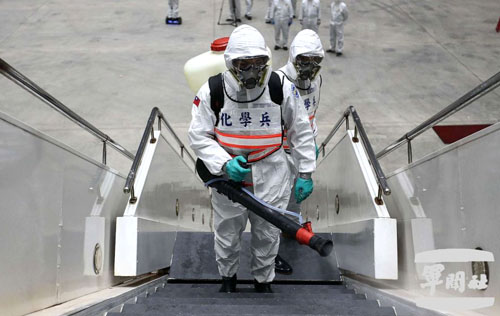by WorldTribune Staff, April 7, 2020
Taiwan and South Korea have been lauded by many health officials and media organizations as models of successful strategies to combat the coronavirus.
However, while South Korea’s testing strategy has reportedly flattened the curve of infections, it still has more than 10,000 confirmed cases of COVID-19. Taiwan has 355.

The contrast comes from how the two nations handled the outbreak from the outset, Tara O noted in an April 5 report for East Asia Research Center.
Taiwan “restricted entry from China early on, contrary to World Health Organization (WHO) recommendations, and currently has relatively low numbers of coronavirus cases and deaths,” she noted. “South Korea took a different approach of continuing to allow entry from China and has a much higher number of coronavirus cases and deaths.”
According to the UN Office for the Coordination of Humanitarian Affairs (OCHA), Taiwan and South Korea both had their first confirmed cases of COVID-19 by Jan. 22.
As of April 4, OCHA said South Korea had 10,156 confirmed infections compared to 355 for Taiwan. South Korea had 177 reported deaths from the virus and Taiwan had 5. South Korea’s population is 51.3 million and Taiwan’s is 21.3 million.
“Taiwan recognized the threat early on and rapidly began to take measures,” according to the report. “It inspected and screened travelers from Wuhan as early as December 31, 2019. It also actively monitored travelers from Wuhan who had already entered Taiwan on December 20, 2019 and onwards.”
Taiwan had also “developed screening, testing, and quarantine protocols early based on lessons from the SARS 2003 outbreak. It also engaged in aggressive contact tracing to ensure everyone that came into contact with an infected person was quarantined and tested. On Feb. 6, Taiwan banned travel from China.”
South Korea “never banned travel from China, although the Korean Medical Association (KMA) and the public called for such measures multiple times,” Tara O noted. “South Korea eventually restricted travel from Wuhan on Feb. 2 but it was not until after China had already quarantined the City of Wuhan. KMA, on Feb. 3, made its fifth request to the government to ban entry from China. KMA also highlighted inadequate tracking of visitors from China. KMA’s concerns and the government’s inadequate tracing are not reflected in foreign reports that praise South Korea.”
She added: “On Jan. 31, 11,345 people traveled from China to South Korea. Multiplying by 30 days, that would be more than 340,350 people in one month. If 1 percent were infected with the coronavirus, that would be 3,403 infected people entering South Korea.”
Taiwan also took the initial step of banning mask exports to China, stating it needed to take care of its people first. “It established a system in which its citizens are provided with adequate masks, and at a low cost of 17 cents per mask,” Tara O noted. Taiwan then began producing more masks and is even donating 10 million face masks this month.
“On the other hand, South Korea donated millions of masks to China in late January and continued to export millions of masks to China, while South Korean citizens and health care providers suffered from mask shortages,” the report said.
As for South Korea’s “aggressive testing” often touted by Western press, Tara O wrote that the South Korean government “changed its testing guidelines, so that a sick person needs to have a CT Scan or an X-ray before a coronavirus test can be administered. This has the effect of reducing the number of tests South Korea will conduct, which also means a reduced number of reported cases. In short, Western media has touted rapid, free, aggressive testing of suspected infected individuals as well as contact tracing and testing those an infected person has come into contact with as the keys to stopping the coronavirus, but this depiction is not accurate.”
World Health Organization Director-General Tedros Adhanom Ghebreyesus praised South Korea’s “comprehensive strategy,” involving aggressive testing, diagnosis and tracing, is working effectively against the coronavirus.
The WHO has been heavily criticized for its response to the outbreak and the director-general has been slammed for his close ties to the Chinese Communist Party.
Ghebreyesus requested that Moon endeavor to encourage global leaders to learn from South Korea’s method, according to Cheong Wa Dae spokesman Kang Min-Seok.
The WHO leader made a “special suggestion” that Moon pay keen attention to the issue of providing sub-Saharan African nations with test kits and other medical devices.
He also invited Moon to deliver a keynote speech at the World Health Assembly to be held via videoconferencing in May.
“It would serve as a good opportunity to share South Korea’s experience in connection with COVID-19,” Ghebreyesus was quoted as saying.
Intelligence Brief __________ Replace The Media
